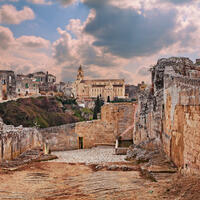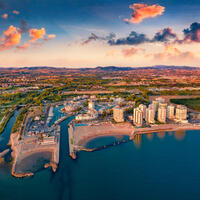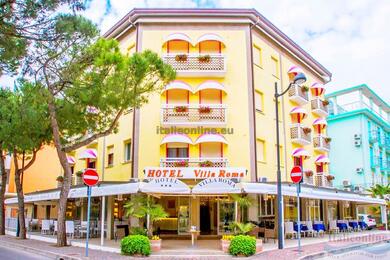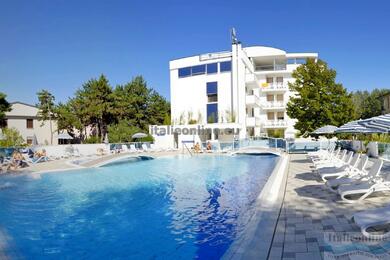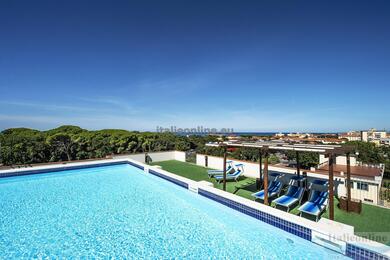A walk through the town
Although Vieste is primarily a beach resort, you can be drawn into the history of the old town through its steep streets. Vieste was founded in the 10th century BC.
A castle was built on the highest point by Frederick II, but is now inaccessible to the public as it has become the seat of the navy. Just below you will find the 11th century cathedral built by the Normans in the Apulian Romanesque style. It is characterised by a peculiar tower that resembles a cardinal's hat.
On a narrow rocky spur you can see the small church of St Francis.behind it, you can see a somewhat strange structure with wooden posts sticking out and lots of ropes. These are the so-called trabucchi, ancient fishing platforms from which fishermen drop their nets and where they haul in their catch.
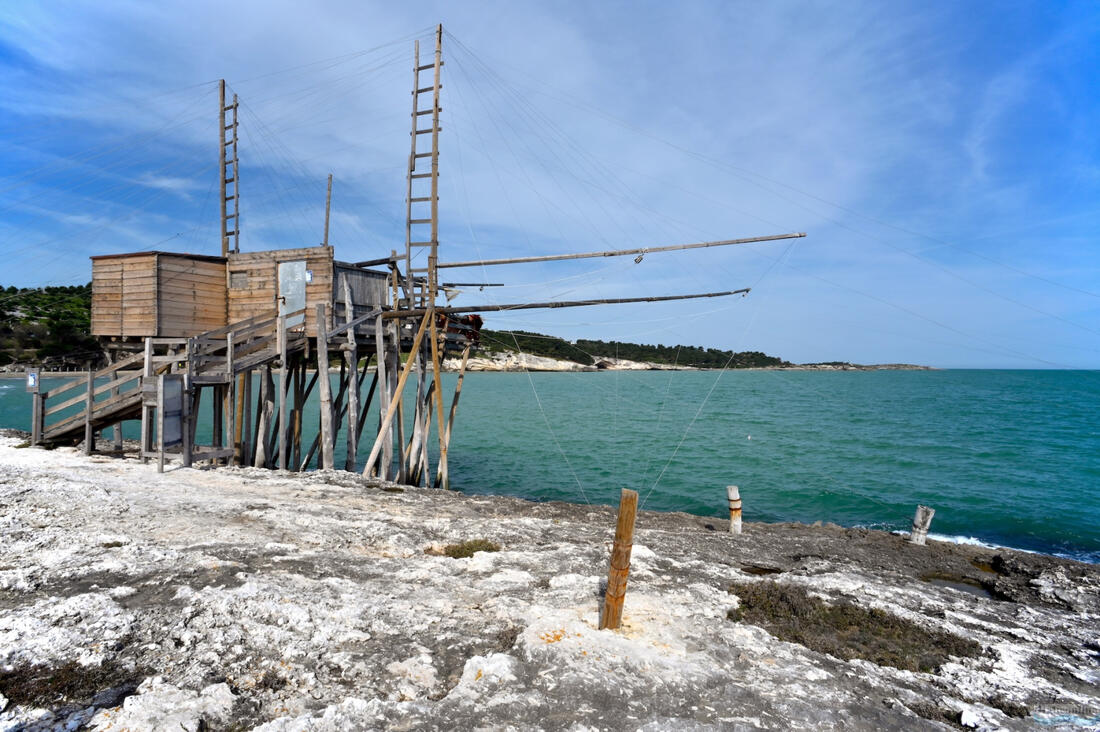
Also worth a visit on the waterfront is the Museo Malacologico, a museum of shells, fossils and giant clams. It is open every day in the morning from 10am and in the afternoon from 5pm and is free to enter.
Colour palette
The town itself and its surroundings are a feast for the eyes, thanks to the interplay of colours of natural and architectural beauty.
The core of the town is made of white marble, which is also laid in the streets. Most of the picturesque houses in the town are also white. These contrast beautifully with the bright blue of the sea, which is so clear that it is often awarded the Blue Flag for its excellent water clarity. The shades of blue stand out beautifully at the sea caves, which you can visit on a boat tour.
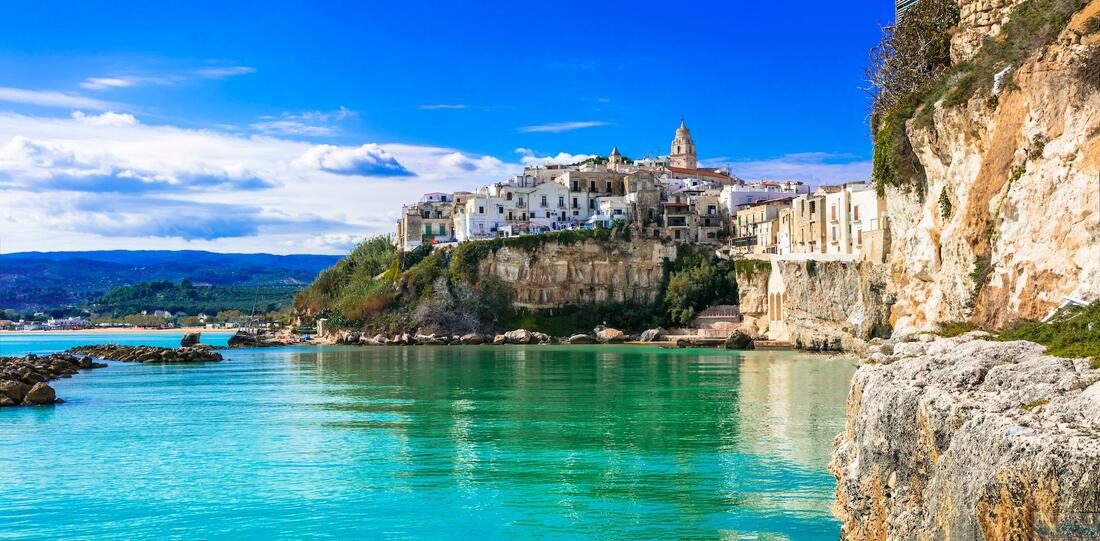
The gold belongs to the beaches. Here you will find quiet little sandy coves, often accessible only from the sea, as well as long beaches offering tourist services and entertainment. The most famous beach in Vieste is Scialara, where the Pizzomunno - an impressive limestone monolith, 25 metres high, and the legend of the love between the young fisherman Pizzomunno and his beloved Cristalda. The beach is 3 kilometres long, the seabed is sandy and the entrance to the sea is gradual, making it ideal for holidays with children.
Another beautiful beach is Spiaggia di Scialara, offering golden sand and crystal clear waters ideal for families and water sports enthusiasts.
Red is significant for local sunsets, pink for sunrises. Both are perfectly observed on the local beaches, by the sea.
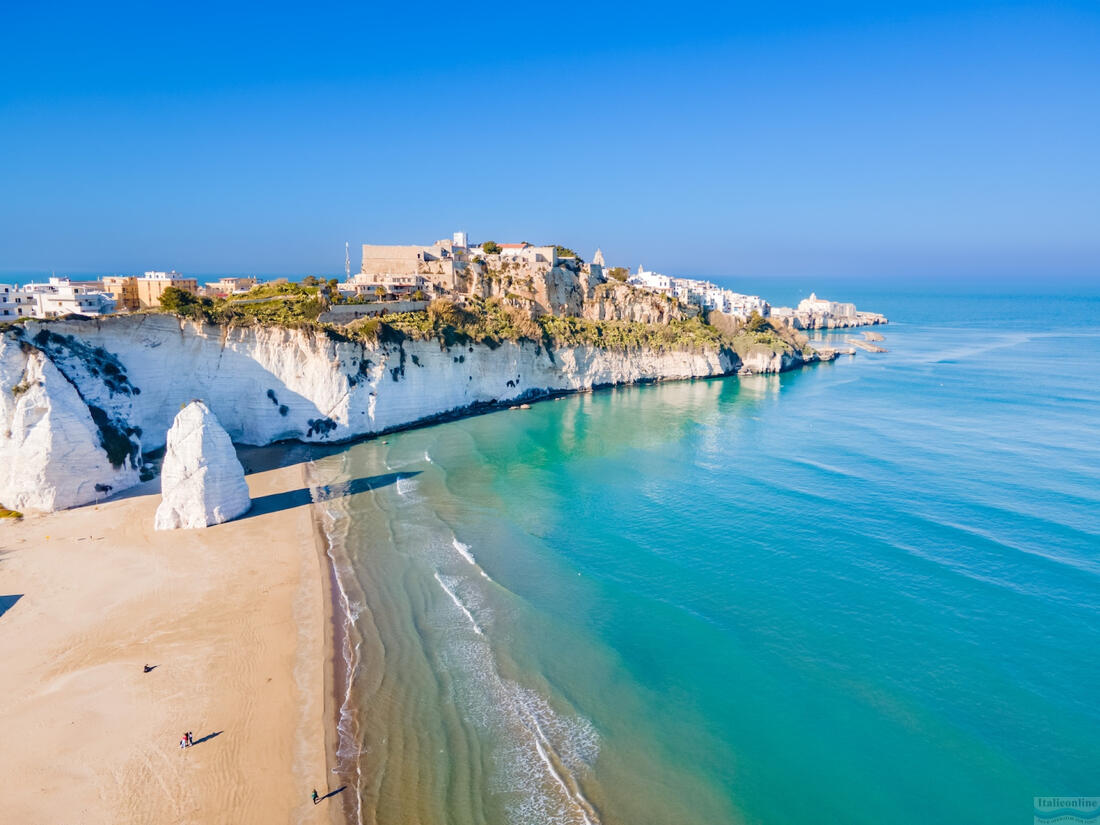
Faro di Vieste
The lighthouse in Vieste, known as the Faro di Vieste, is one of the iconic symbols of the city. It is located on the islet of Sant'Eufemia, just off the coast. The lighthouse was built in 1867 and still serves as an important navigation point for ships sailing through the Adriatic Sea.
Interestingly, the islet of Sant'Eufemia hides not only the lighthouse but also archaeological finds. Ancient engravings and inscriptions have been discovered in the caves on the islet, which show that the site was already important to ancient civilisations. Some of these engravings have been interpreted as votive symbols or messages for sailors.
The lighthouse is only open to sailors and workers, but you can see it up close during your cruises around Vieste.
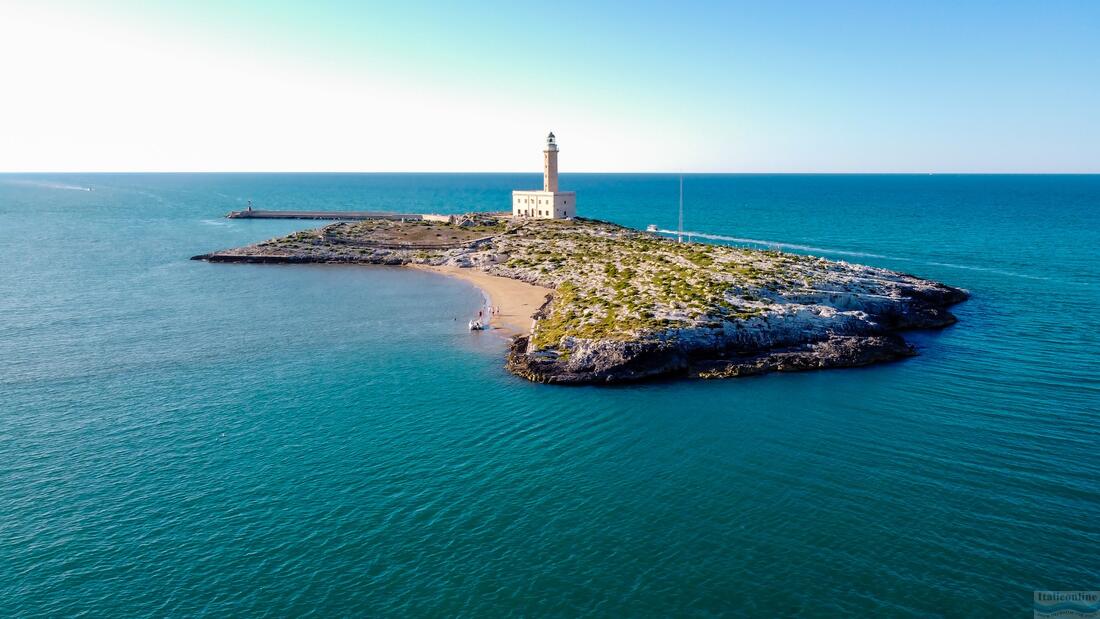
Activities and gastronomy
Vieste is a great base for exploring the Gargano National Park. The wooded areas of Foresta Umbra, lakes Varano and Lesina or the picturesque inland villages provide endless opportunities for hiking, cycling and photography.
The town will also delight lovers of gastronomy. The local cuisine is full of fresh fish, seafood, homemade pasta and olive oil. Don't forget to try dishes like "orecchiette" with tomato sauce, fresh mussels or the local almond dessert "cartellate".
Tips for the end
The best time to visit Vieste is spring and autumn, when the climate is pleasant and the city less crowded.
For festival lovers, July is ideal, when celebrations are held in honour of St George, the city's patron saint.
From Vieste it is easy to reach the Tremiti Islands, a paradise for divers and lovers of peaceful nature.


